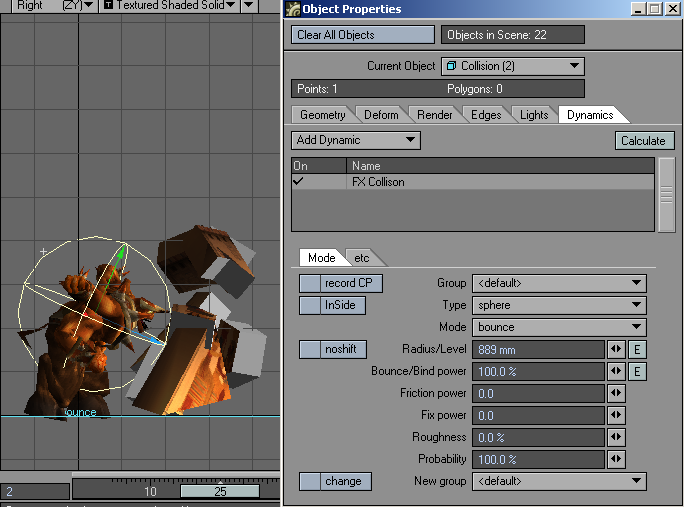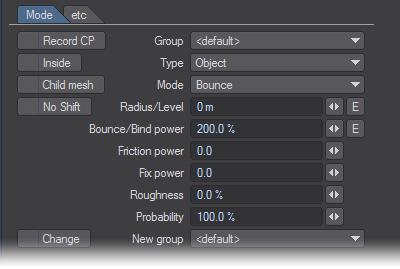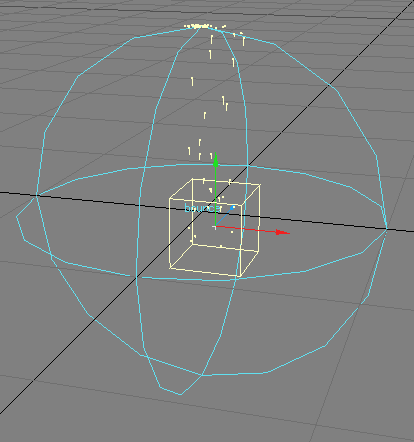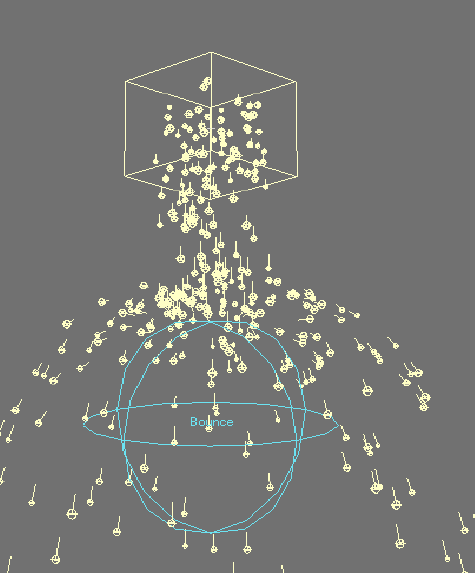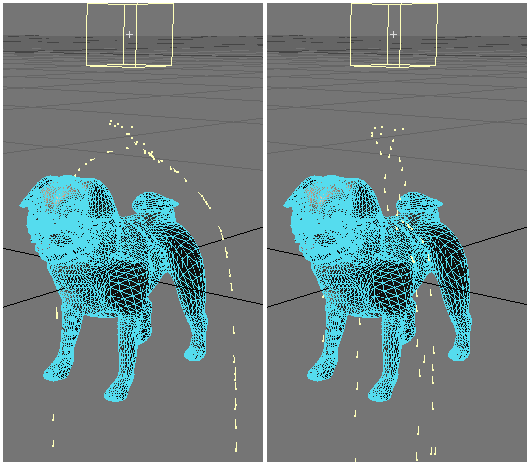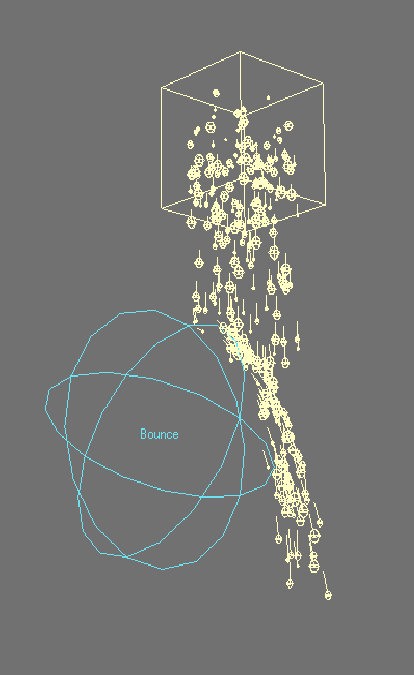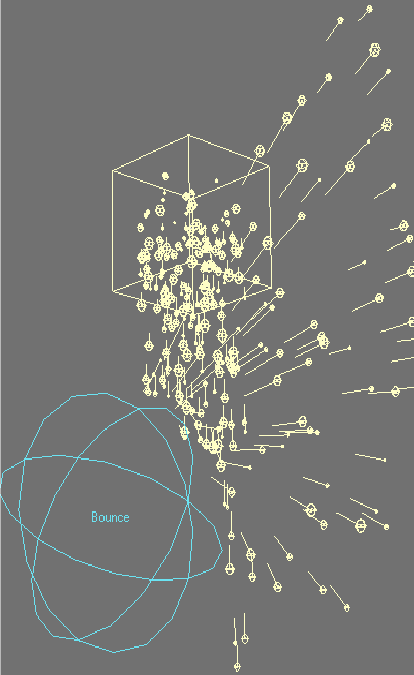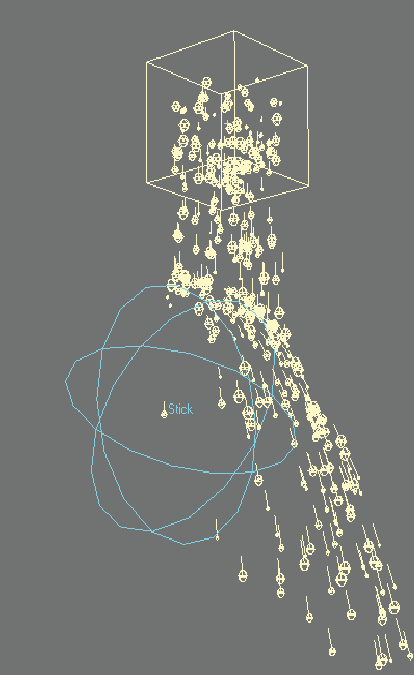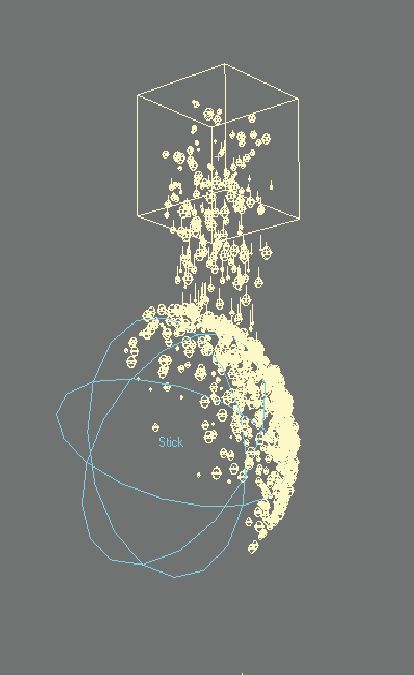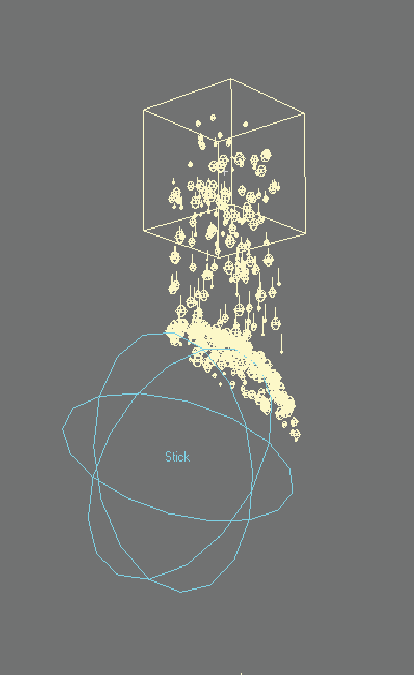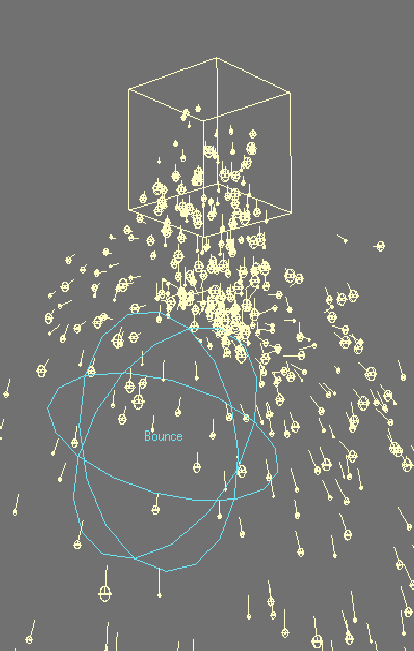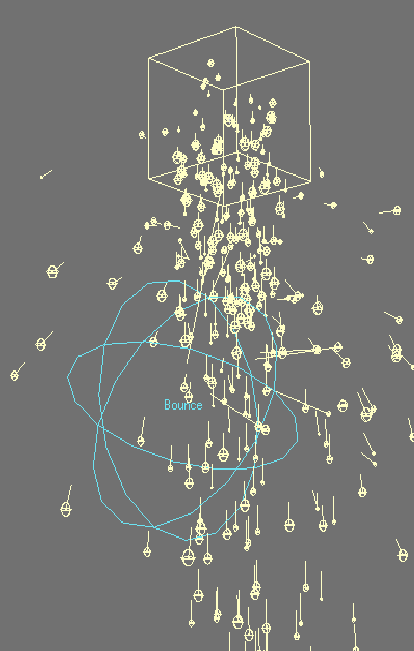Dynamics: Collision Controller
The Collision controller lets you add an element for the particles to bump into.
Collision controllers (FX Gravity) can be added in the Dynamics Tab of the Object Properties Panel or on the Items Tab in the Dynamic Objects drop down menu.
Mode Tab
- Group - you can group Dynamic objects with a user-defined name to prevent unwanted interaction. This becomes very handy when you are working on a complex scene and you want certain Collision objects to only affect certain objects.
- <default> Includes all groups.
- <new group> Creates individual group. It can associate functions within a group.
You can associate with ParticleFX’s functions using group function. If it is in the same group, you can associate settings. Also, if you do not want to associate, you can disregard the association by removing from the group.
The Type setting controls the shape of the collision object. The Sphere, Box, and Plane options can be used for basic primitive collision shapes. The object, object-subdiv, and object-advanced settings are used when you use a LightWave object for collisions. Use the Infinite setting for an infinite-sized collision area. This is particularly useful with the Scatter and Attract modes. (Note that the Bound and Stick modes will continue to respect the Radius/Level setting.)
Use the Recode CP option to set up an event-like trigger to be read by a child emitter’s Playback Mode. As particles cross the collision plane created by the collision item, this event triggers the playback of a saved motion.
The InSide option causes the collision to occur inside the collision object.
Child Mesh will apply the current collision settings to a child object mesh, if one exists.
The Noshift option disables any offset the particles may generate in the collision process. This ensures that the particles will collide directly on the collision surface.
By activating the Change option, particles passing through the collision item can switch to a different group, to be affected by a different controller. The New Group defines which group the particles will switch to.The Mode setting determines what happens when a collision occurs. The Bounce option causes the collision to change the direction and velocity of the particles. With Stick, the particles simply adhere to the surface. Erase kills the particle upon contact. The event mode is used when the emitter has its Generate by option set to collision event: it creates particles at the time of collision. In Scatter mode, the collisions occur within the interior of the collision object and not at its surface. This causes the particles to scatter. The Attract mode causes the particles to be attracted to the center of the collision object.
Bounce
Stick
Attract
The Radius/Level setting sets the size of the collision object based on this radius. If Type is set to Plane, this setting controls the level of the plane. If you are using a LightWave object, this setting controls the distance from the surface where the collision occurs.
Left: Radius = 3m, Right: Radius = 0m
The Bounce/Bind power setting controls how particles bounce off the surface, when Mode is set to Bounce. The Stick mode controls the amount of attachment the particles have.
Left: Bounce Mode, Bounce/Bind: 50%; Right: Bounce Mode, Bounce/Bind: 400%
Left: Stick Mode, Bounce/Bind: 10%; Right: Stick Mode, Bounce/Bind: 90%
Friction power adds friction to the collision surface when you use the Stick mode, which slows the momentum of particles sliding over the surface.
Left: Friction: 0; Right: Friction: 20
Fix power causes the particles to stick to the surface and not slide around.
Left: Fix: 0; Right: Fix: 1.0
Increasing the Roughness setting roughens up the collision surface. Roughness changes particle motion after collisions, but it also depends on the Mode setting.
Left: Roughness: 0; Right: Roughness: 200
If you reduce the Probability setting below 100%, you reduce the chance of a particle being treated as having collided with the collision object.
Left: Probability: 100%; Right: Probability: 10%
Etc Tab
On the Etc. Tab, you can Copy, Paste, Load, and Save settings for the Collision controller.
Using an Object for Collisions
You can use a LightWave object as a Collision object by adding Collision from the Add Dynamic drop down menu in the Object Properties Panel, Dynamic Tab. You must set the Type to object on the object’s Collision Controller Panel. If you use a SubPatch object, you set the Type to object-subdiv to use the subdivided mesh instead of the base polygonal object. Use the object-advanced type to get even more accurate collision detection.
